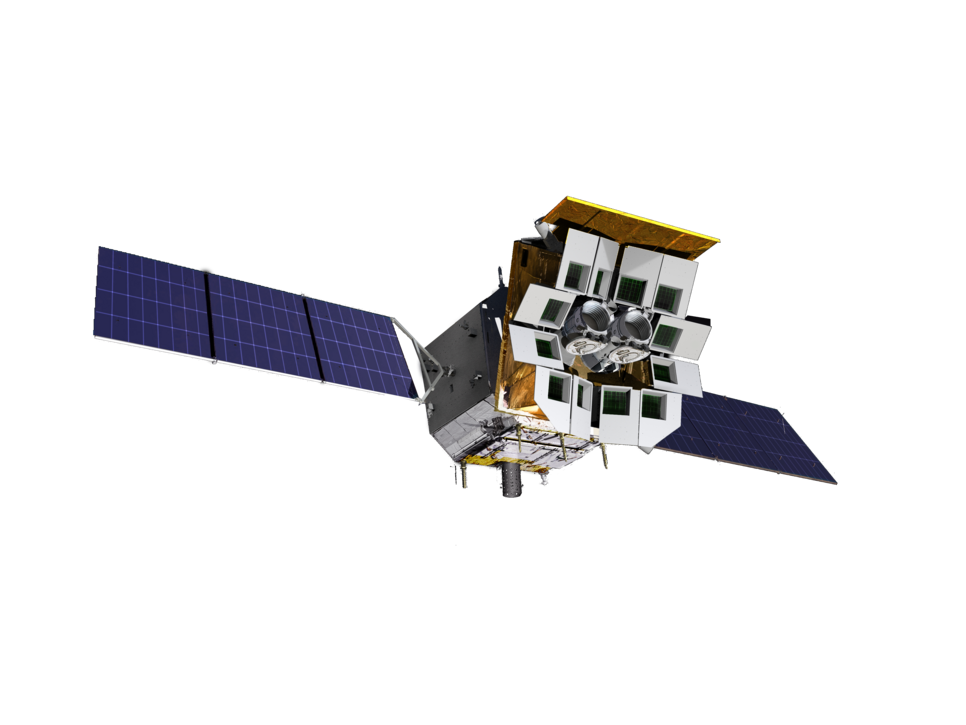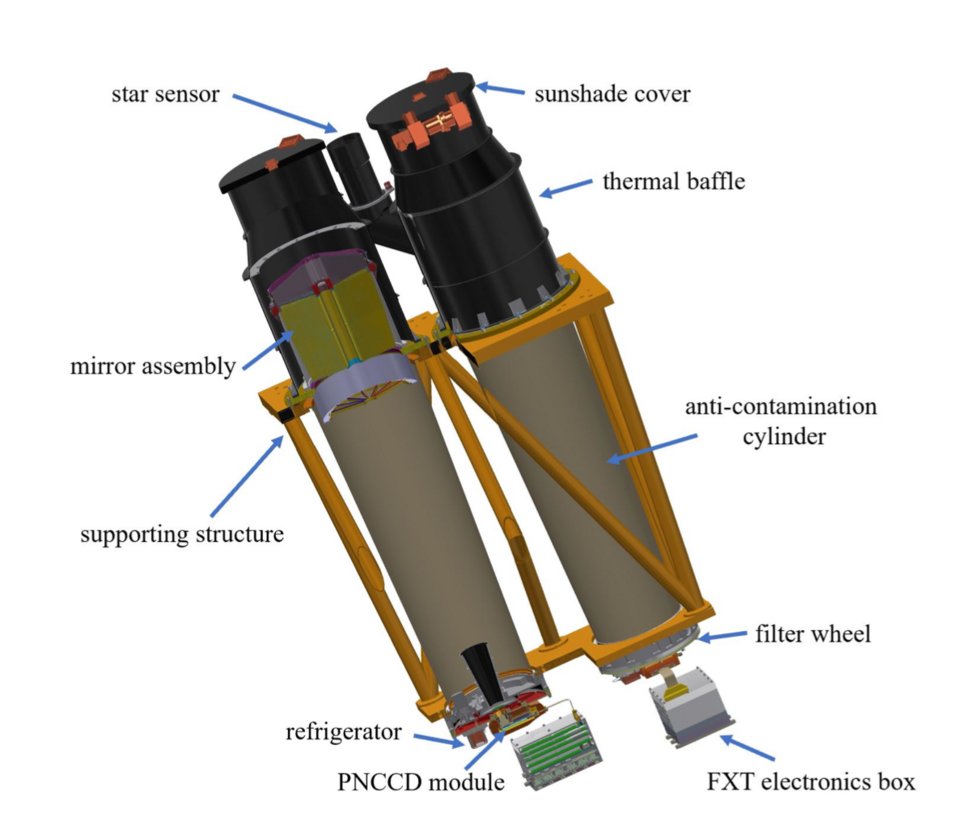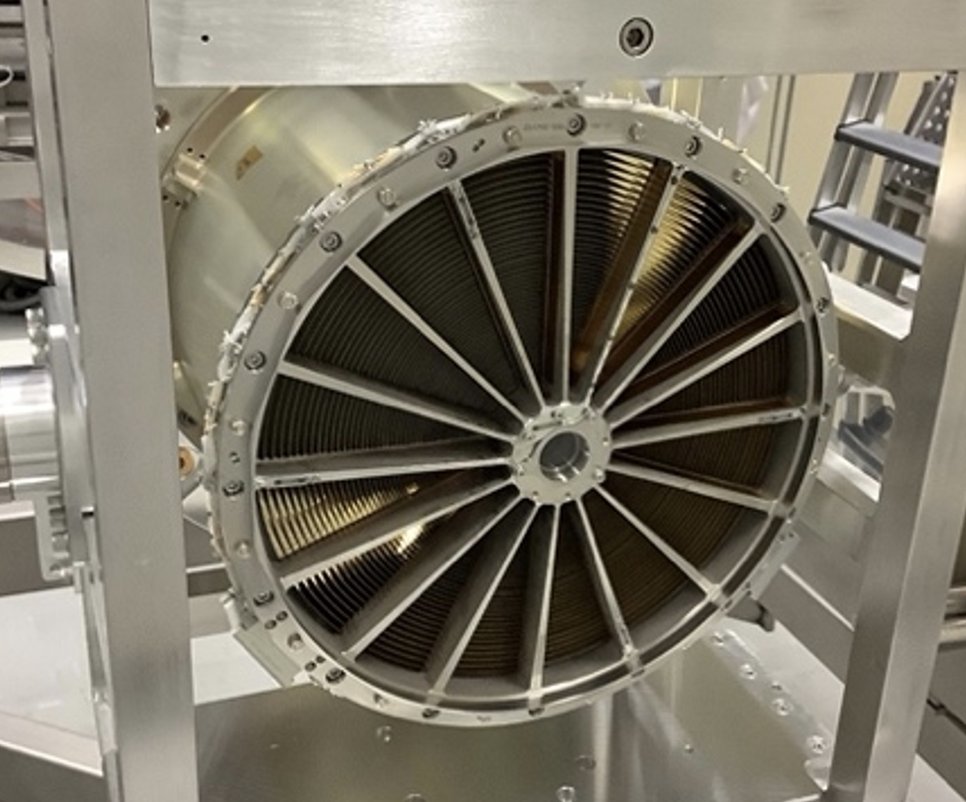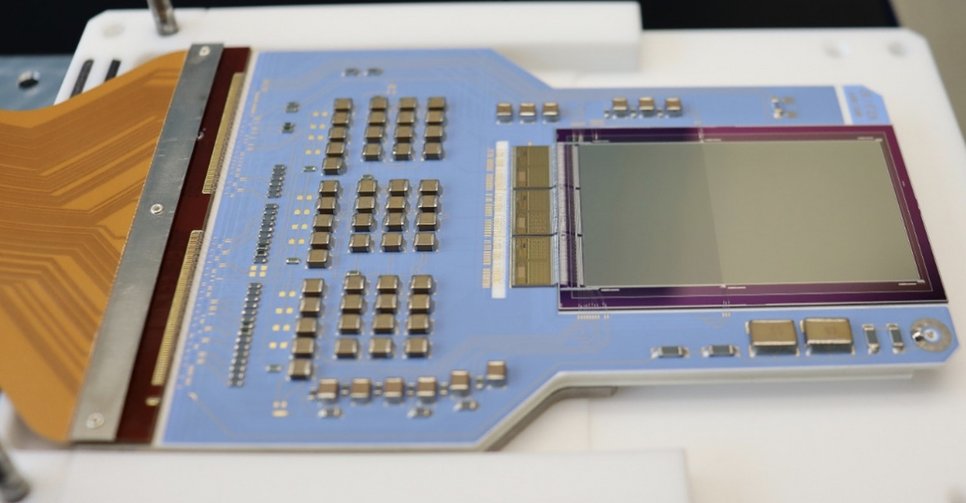Einstein Probe
Einstein Probe (EP) is an X-ray mission of the Chinese Academy of Sciences (CAS) due for launch in late 2023. It is dedicated to time-domain astrophysics and comprises two main instruments: the Wide-field X-ray Telescope (WXT) and the Follow-up X-ray Telescope (FXT). EP will cover a wide range of scientific topics, from the nearby to the high-redshift Universe. In the next decade, time-domain astronomy will enter a golden age of discovery due to the advent of major facilities across the electromagnetic spectrum and, even more excitingly, in the multi-messenger domain, including gravitational-waves and neutrinos for which wide-field facilities are essential. EP will perform a crucial role by filling the otherwise missing gap in the electro-magnetic regime by providing X-ray monitoring of the sky with sensitivity matching closely the major facilities in other wavebands. Facing the new discovery space and great science opportunities, EP has the potential to address some of the most fascinating questions in current time-domain and multi-messenger astrophysics, which will revolutionise some of these research fields. EP will carry out systematic wide-field sky monitoring surveys in the soft X-ray band with unprecedented sensitivity, complemented by prompt and deep X-ray follow-up capability. The primary science objectives are:

- Discovery and characterisation of cosmic X-ray transients, to reveal their properties and gain insight into their nature and underlying physics.
- Discovery and characterisation of X-ray outbursts from normally quiescent black holes, for better understanding of the demographics of black holes and their origin and evolution, as well as accretion physics.
- Search for X-ray sources associated with gravitational-wave events and precisely locate them.
| Profiles of the WXT and FXT | ||
|---|---|---|
| WXT | FXT | |
|
X-ray optics |
Lobster-eye MPO |
Wolter-I |
|
Detector |
CMOS | pnCCD |
|
Effective area |
~3cm 2 @1keV |
300cm 2 @1.5keV (each) |
| FoV | ~3600 deg 2 |
~60 arcmin |
|
Angular resolution |
~5 arcmin |
~20 arcsec HEW @1.5keV |
|
Bandpass |
0.5-4 keV | 0.3-10 keV |
MPE is contributing hardware and its test facilities on the one hand as part of a European contribution to Einstein Probe by ESA, which includes the eROSITA-like optics of the FXT and X-ray testing of WXT modules. On the other hand, MPE is independently supplying CCD modules for the FXT focal plane camera and the eROSITA Flight Spare mirror assembly for a second FXT.


Optics: The FXT design was adopted from eROSITA, i.e., the mirror module consists of 54 nested Wolter mirrors with a focal length of 1600 mm and an effective area of greater than 300 cm2 at 1.5 keV. Together with the X-ray baffle, which suppresses stray-light from single reflection, it forms the mirror assembly. Three of them have been delivered: structural-thermal model (STM), qualification model (QM), and flight model (FM). Starting in 2019, the mirror modules were manufactured by the Italian company Media Lario, while the corresponding X-ray baffles were made and unified with the mirror modules at MPE. The test and qualification program was carried out specifically for each of the three models: It includes vibration and thermal cycling tests for each model and in total ten X-ray performance tests, where two of them included the X-ray calibration of the QM (which serves as a flight spare) and the FM. In addition, MPE has provided three electron diverters (QM and 2 FMs) that shall prevent electrons from being focused towards the detector. The electron diverters are standalone items with an almost identical design of the eROSITA ones and underwent workmanship tests and vibration tests at acceptance level. MPE used its laboratories, cleanrooms, and test facilities – in particular the X-ray test facility Panter – for the project.

Detector: The focal plane detectors of the two Einstein Probe FXT telescopes were developed at MPE. The FXT detector concept is based on that developed for the eROSITA instrument, which has been operating successfully in space since 2019. The back-illuminated and fully depleted PNCCD (450 µm thickness) comprises 384x384 pixels in the image area with a pixel size of 75x75µm2. The transfer of the image into the frame store area is performed in 0.12ms. Signal readout of the 147,456 pixels is performed within 9.2 ms by a column-parallel CCD architecture and three custom 128-channel CAMEX ASICs. The read noise is 2.6 electrons equivalent noise charge rms for the planned time resolution of 50ms. The energy band of EP FXT ranges from 0.3 keV to 10 keV. A 90 nm thick optical blocking filter was directly deposited on the photon entrance window of the PNCCDs, which were manufactured at the semiconductor laboratory of the Max Planck Society for this project. MPE delivered to Einstein Probe FXT first an engineering model detector in 2020, then the qualification model and finally 2 flight detectors in 2021. Next is the flight spare detector module, scheduled for delivery in summer 2022.
EP will be a unique and powerful mission to discover high-energy transients and monitor variable objects. The EP science team has defined the observation modes for EP and the EP data policy. Based on the agreement between CAS, ESA, and MPE, MPE will have access to 10 percent of EP observational data, including data from WXT all sky survey, FXT targets of interest, and EP ToO/follow-up observations. These data will enable MPE members to conduct their own science projects, such as: searching for Quasi-Periodic Eruptions from Supermassive Black Holes (SMBH), studying frequency of occultation events in SMBHs, and searching for partial Tidal Disruption Events (TDEs). At the request of the CAS EP science team, MPE will also contribute to the EP pre-launch science simulations by providing the eROSITA eRASS1 X-ray catalogue and eRASS1 X-ray diffuse background which match the sensitivity and angular resolution of EP well.



